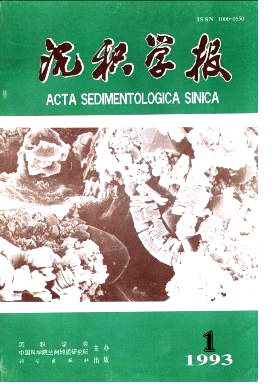HTML
| [1] | (1) Kolla, V., Nadler, L.及Bonatti, E., 1980, Clay mineral distributions in surface sediments of the Philippine sea. Oceanologica Acta, vol. 3, p.245-250 (2) Latouche, C.& Maillet. N., 1982. X-ray mineralogy studies. Deep Sea Drilling Project Leg 60. In: Hussonf, D.M.et al.. (eds) Initial Reports of DSDP, vo1.60. p.437-453 (3) Nagel. U.&Schumann, D.,1982. Mineralogy of sediments cored during Deep Sea Drilling Project Legs 58-60 in the north and south Philipping Sea: Results of X-ray diffraction analyses. In: Hussong, D. M. et al., (eds) Initial reports of DSDP. vol. 6U, p.415-435 (4) Chamley, H.,1980. Clay sedimentation and paleoenvironment in the Shikoku Basin since the Middle Miocene, (Deep Drilling project, Leg 58, North Philippine Seal. Initial reports of DSDP, vol. 58, p.669-678 (5) Desprairies, A.,1981, Authigenic minerals in volcanogenic sediments cored during Deep Sea Drilling Project Leg 60. In: Hussong, D. M. et al. (eds),Initial reports of DSDP. Vo1.60, p.455-465 (6) Biscaye, P. E. 1965, Mineralogy and sedimentation of recent deep-sea clay in the Atlantic Ocean and adjacent seas and oceans. Am. Geol. Soc. Bull., vo1.76, p.803-832 (7) Brindley. G. W & Brown, G.,1980, crystal stuctures of clay minerals and their X- ray identification Mineralogical Society, London, P.495 (8) Sudo, T.&Shimoda, S.,1978, Clays and clay minerals of Japan. Development in Sedimentology. 26 Amsterdam, p.20-70 (9) Russell. J. D.& Clark, D. R., 1978. The effect of Fe for Si substitution on the b-dimension of nontronite. Clay M inerals, vo1.13, p.133-13'1 (10) Copeland, R.A, et al., 1971, origin of clay minerals in a Mid-Atlantic Ridge sediments. Earth Planet. Sci. Letl vo1.10, p.133-137 (11) Karig, D. E.,1975, Basin genesis in the Philippine Sea. In: D. K. Karig, et al.(eds.),Initial reports of DSDP, vo1.31,p.857-880 (12) Alt, J. C.&Honnorez, J., 1984, Alteration of the upper oceanic crust. DSDP sUe 417: Mineralogy and them-istry. Contrib. Mineral Petrol., vo1.87, p.149-169 (13) Londale. p.&Hawkins, J.,1985,Silicic volcanism at an off-axis geothermal Geld in the Mariana Trough back-arc basin. Am. Geol. Soc. Bull., vo1.96, p.940-951 (14) Abbott, D. H.. Menke, W.&Morin, R., 1983, Constrains upon water advection in sediments of the Mariana Trough. J. Geophys. Res., vo1.88, p.1075-1093. |






 DownLoad:
DownLoad: